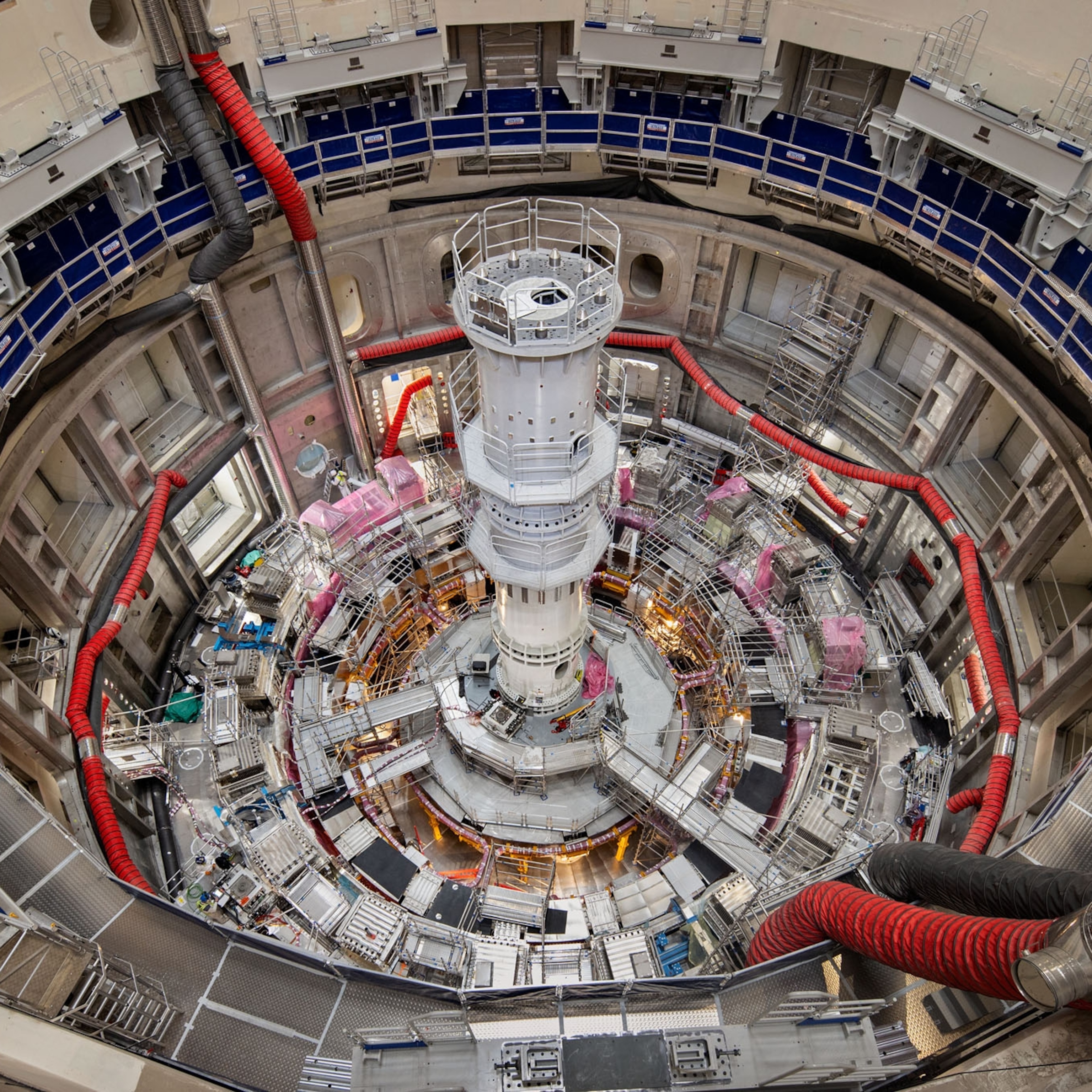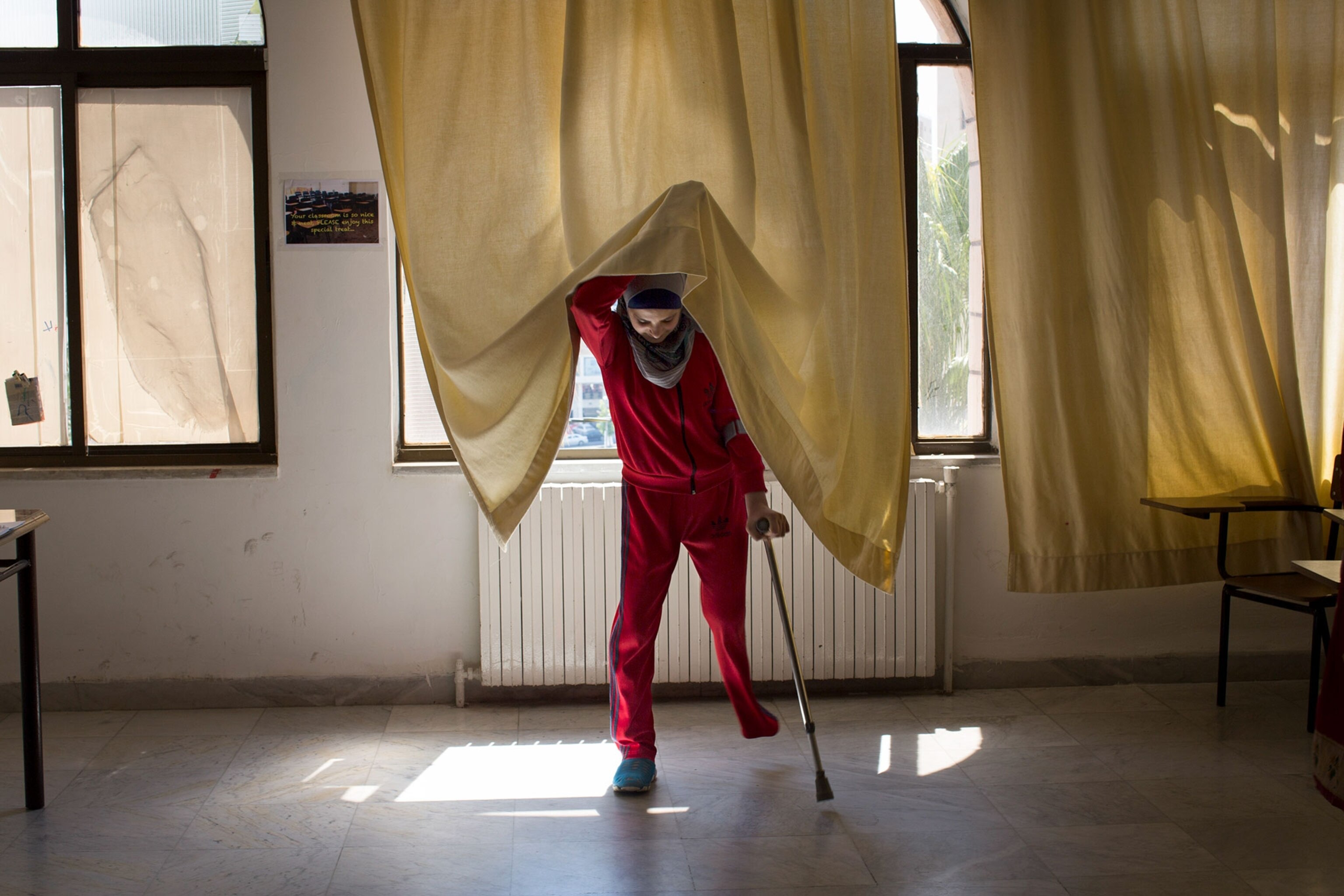
One Electrician's Work Makes a Big Difference at a Hospital for Refugees
For patients recovering from war injuries, a simple light bulb change, among others, brightens the picture.
When patients at a surgical hospital in Amman saw protective coatings being installed over the windows, some assumed the glass was being reinforced against potential bomb blasts. Most of the people there had come from war zones in Syria, Iraq, Yemen, and Gaza. They might reasonably see windows in an eight-story building as a shatter hazard.
In fact, the window films were added simply to absorb the strong Jordanian sunlight, making the hospital's rooms cooler and more energy efficient. Energy demands were growing at the rehabilitation facility, a quarter-century-old hospital reopened in the fall of 2015 by the medical aid nonprofit Doctors Without Borders/Médecins Sans Frontières (MSF).
As the world faces record numbers of displaced people, humanitarian groups have more incentive than ever to explore the best ways to meet their needs. Cleaner and more efficient energy sources can be part of the solution: A report in 2015 found that switching to solar lanterns and clean cookstoves could save more than $300 million a year in fuel costs at refugee camps.
MSF's hospital in Amman is a relatively modern building with a stable supply of electricity from the grid, but its patient roster is growing with the war in Syria, which has displaced 6 in 10 people from the country.
The facility needed to power more reconstructive surgeries and long-term recoveries, and was hosting an average of 180 patients at any given time. But it was strapped with inefficient energy systems and harsh, wasteful lighting.
Energy Upgrades on the Fly
Electrician Bryan Garcia was sent to help the hospital in spring 2016. Garcia, who has been an electrician for 17 years, had just joined MSF as the self-described "resident hippie." He'd been living in Eugene, Oregon, and lit up when the subjects of energy efficiency and renewables came up. "I literally showed up with a tie-dyed T-shirt," he says, laughing.
Originally from southern Florida, he worked long hours on hurricane response efforts early on in his career, and he had also been to Malawi and Sri Lanka on aid missions. He later turned to industrial and commercial projects and found himself in North Dakota a few years ago, supporting oil and gas operations. The wider questions about fracking and its risks, along with concerns about climate change, made him question how he was plying his trade.
"You're wondering, what am I doing? And what are we doing to the world around us?" he says. "The money was good, but I couldn't feel good about that [work] at the end of the day."
He moved to Oregon and worked on a range of projects before some friends at MSF told him the group needed electricians.
"I didn't know what I was getting myself into when they sent me to Jordan," Garcia says. "It didn't quite make sense until I saw the building ...When I got there, it was apparent that the infrastructure was below par."
The hospital had piercingly bright fluorescent lighting, and the air conditioning was taxed by the intense sunlight coming through the windows. Monthly energy bills could run as high as $65,000. Garcia's job was to implement previously proposed energy improvements without disrupting the hospital's operations.
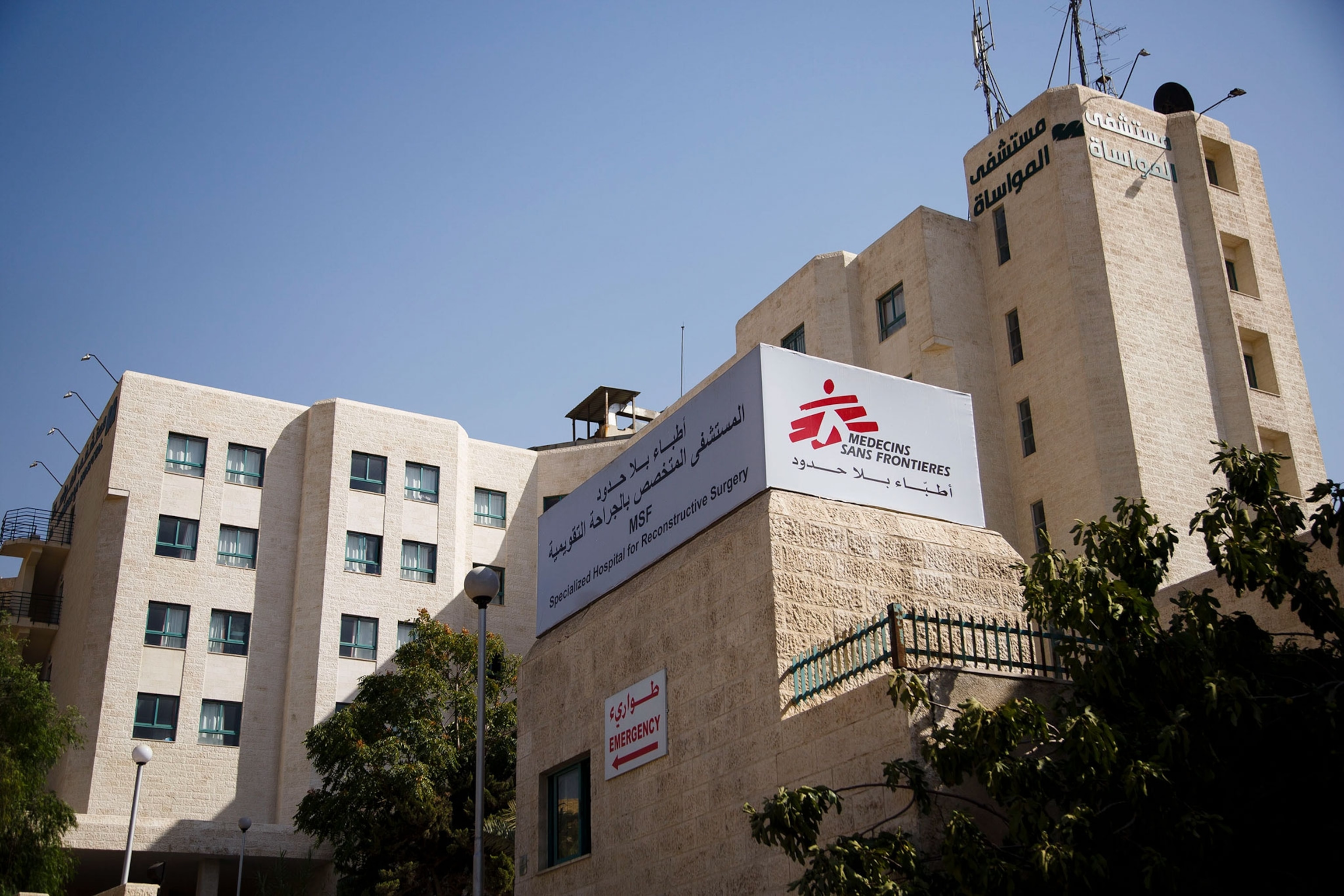
The first step was to install the window films, which absorb excess sunlight and improve indoor climate control. But the most commonly used coatings are reflective, like mirrors—and mirrors of any kind had proven distressing to a patient population often grappling with burns and other appearance-altering injuries.
Garcia worked with the counseling team at the hospital to test coatings that would achieve energy savings without disturbing the patients or limiting their access to natural light. In place of the fluorescent lights, he installed custom-ordered LEDs—suppliers looked at him like he was crazy, he says, because what he wanted was unlike anything in use at other big buildings in Jordan. But the lights cast a softer, warmer glow while using nearly 75 percent less energy. He evaluated the cooling and ventilation systems, which still need to be refurbished, and recommended the installation of a solar PV array.
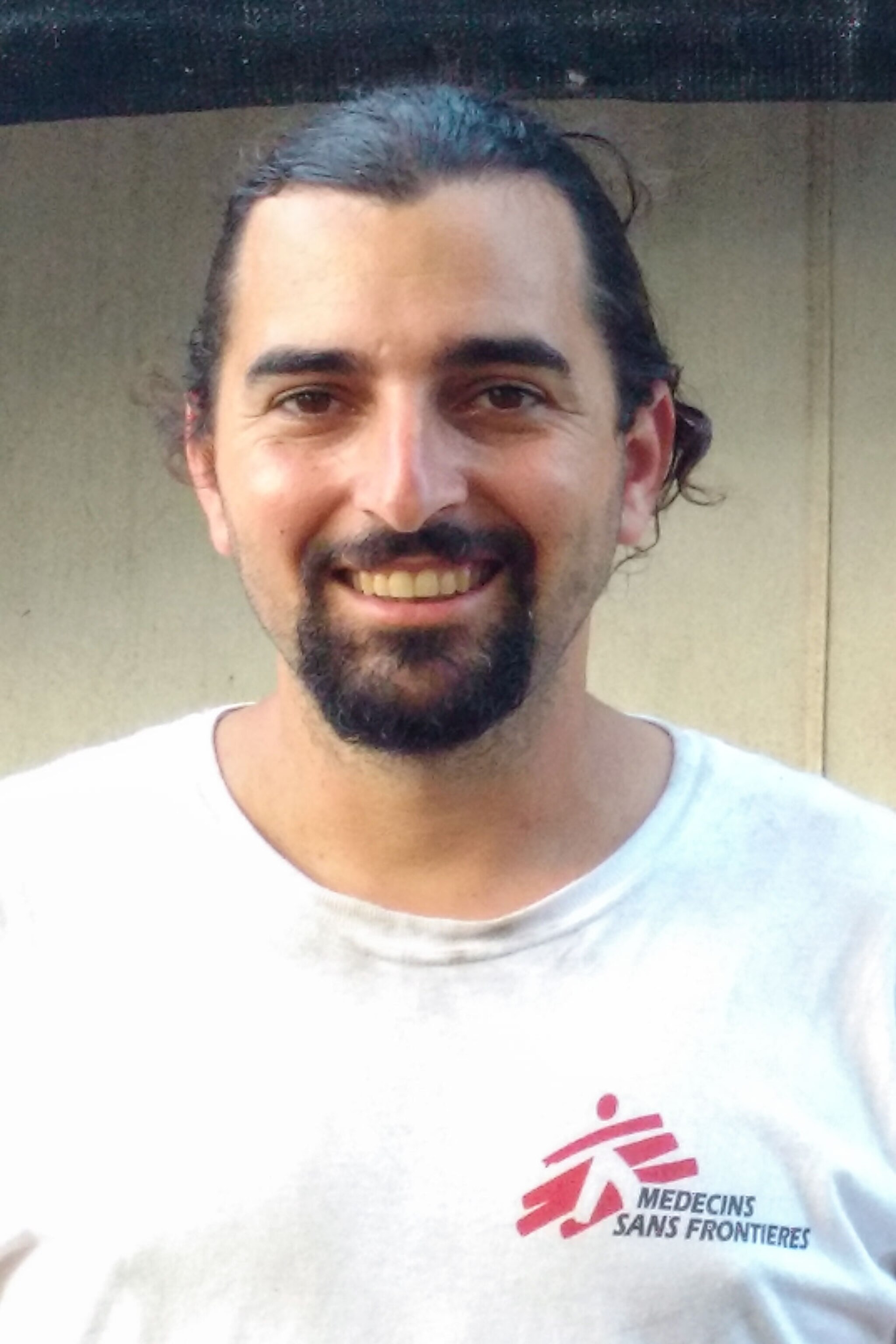
Trying to conduct energy upgrades by working around the activities of a functioning hospital wasn't ideal, Garcia says, but it did help him get feedback on adjustments right away. He heard the happy exclamations from patients when it was easier to be near the window without getting too hot, or the rooms felt more welcoming because of the better light. Nurses told him about the difference he was making.
"It was a good reminder of why we were doing this," he says, noting that many patients are there for months at a time as they recuperate from major surgeries. "These are people who are living in a hospital who have survived some of the most brutal conditions imaginable."
From Electricians to “Energy Advisors”
Electricians have always been essential to powering MSF's various clinics and hospitals, which are often makeshift locations that depend on generators. But increasingly, they're "evolving into energy advisors," says Alfredo Gonzalez Paredes, who leads energy and cold-chain management for the French arm of MSF.
The group is interested in renewable energy, he says, because of how it could save costs, simplify operations (no fossil fuel to transport or store), and reduce the carbon footprint. Still, renewable energy projects take time—which, along with many other resources in an emergency aid situation, is in short supply—and in some locations, visible solar arrays can highlight sites as potential attack targets.
"We must keep in mind that even though there is a strong will to move towards renewable energy, fossil fuel remains the simplest and fastest solution to size, install and run almost anywhere in the world," Paredes says.
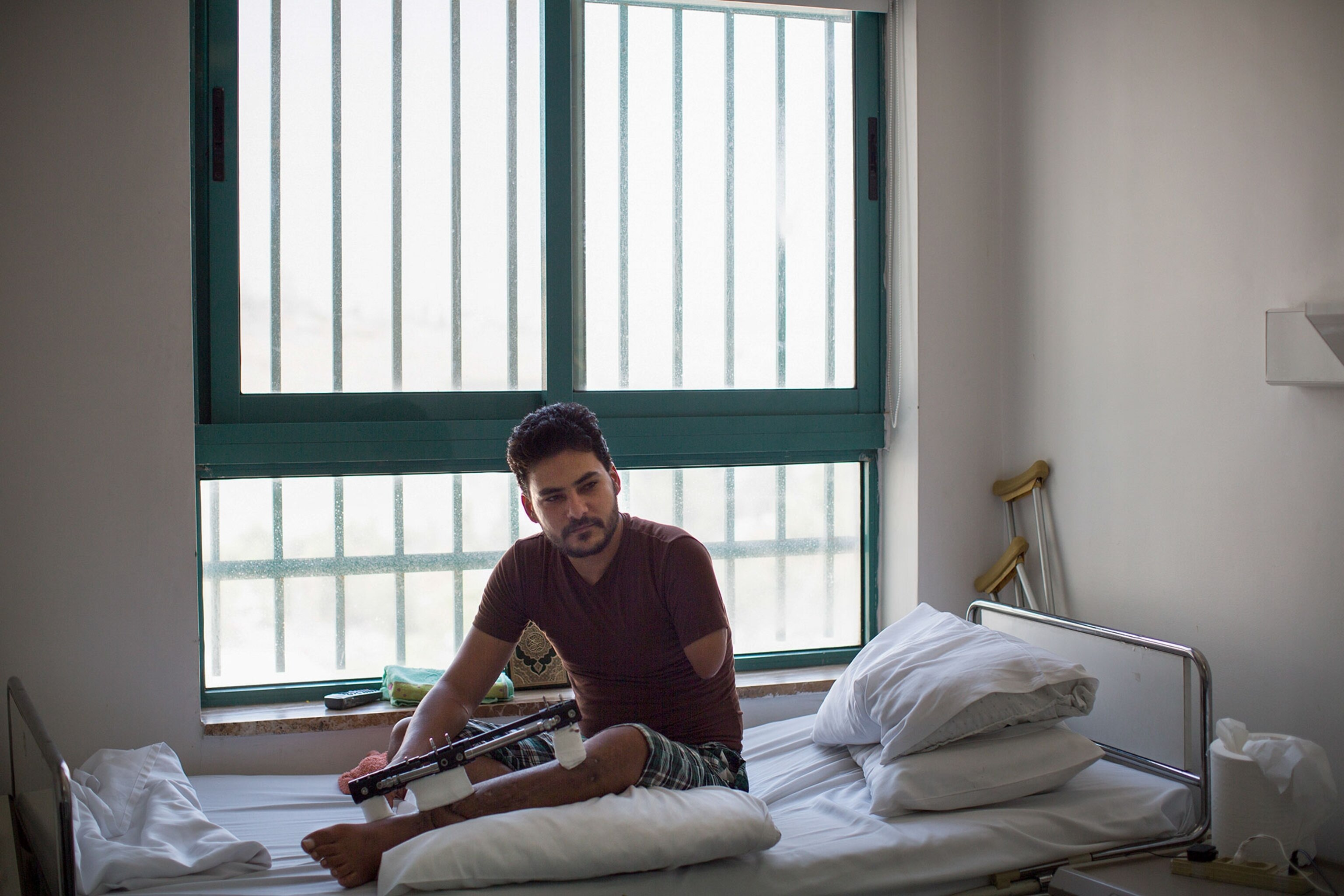
Garcia estimated that installing a modest 67-kilowatt photovoltaic system could save the Amman hospital up to $300,000 over MSF's expected 10-year occupancy. The group currently is looking for sponsors to fund the system.
Meanwhile, other elements of Garcia's plan are being expanded to other MSF hospitals in the region. Those hospitals also end up serving as test beds for technologies that can be used in less stable locations, he says. While MSF isn't yet releasing numbers on how much total energy the upgrades in Amman have saved, Garcia says his own analysis showed that the expected increases in energy consumption as the hospital expands operations aren't nearly as large as they would have been otherwise.
Garcia is now evaluating the energy needs of a different MSF facility in South Sudan. During the 10 months he spent in Jordan, he says, the feedback he got from patients and nurses confirmed the choices he made there. Reflecting on the results, he says, "I have a big ol' grin right now."
